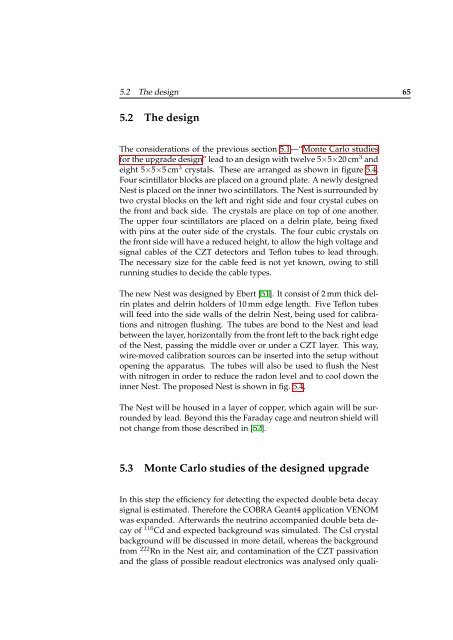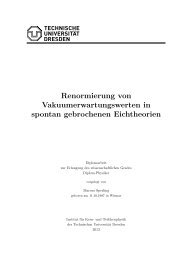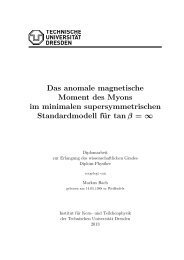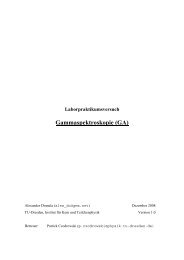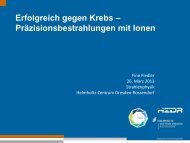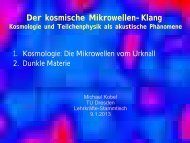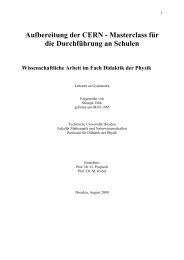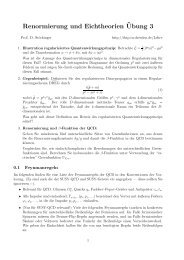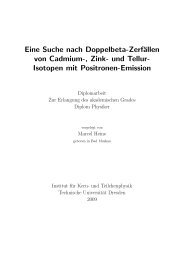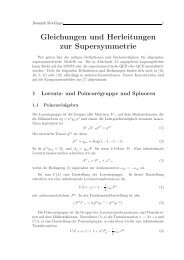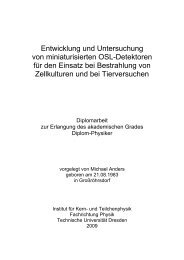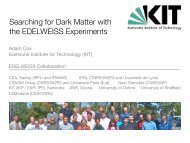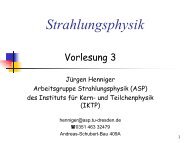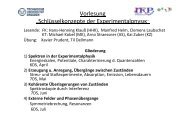a design study for a cobra upgrade to - Institut für Kern- und ...
a design study for a cobra upgrade to - Institut für Kern- und ...
a design study for a cobra upgrade to - Institut für Kern- und ...
Create successful ePaper yourself
Turn your PDF publications into a flip-book with our unique Google optimized e-Paper software.
5.2 The <strong>design</strong> 65<br />
5.2 The <strong>design</strong><br />
The considerations of the previous section 5.1—“Monte Carlo studies<br />
<strong>for</strong> the <strong>upgrade</strong> <strong>design</strong>” lead <strong>to</strong> an <strong>design</strong> with twelve 5×5×20 cm 3 and<br />
eight 5×5×5 cm 3 crystals. These are arranged as shown in figure 5.4.<br />
Four scintilla<strong>to</strong>r blocks are placed on a gro<strong>und</strong> plate. A newly <strong>design</strong>ed<br />
Nest is placed on the inner two scintilla<strong>to</strong>rs. The Nest is surro<strong>und</strong>ed by<br />
two crystal blocks on the left and right side and four crystal cubes on<br />
the front and back side. The crystals are place on <strong>to</strong>p of one another.<br />
The upper four scintilla<strong>to</strong>rs are placed on a delrin plate, being fixed<br />
with pins at the outer side of the crystals. The four cubic crystals on<br />
the front side will have a reduced height, <strong>to</strong> allow the high voltage and<br />
signal cables of the CZT detec<strong>to</strong>rs and Teflon tubes <strong>to</strong> lead through.<br />
The necessary size <strong>for</strong> the cable feed is not yet known, owing <strong>to</strong> still<br />
running studies <strong>to</strong> decide the cable types.<br />
The new Nest was <strong>design</strong>ed by Ebert [51]. It consist of 2 mm thick delrin<br />
plates and delrin holders of 10 mm edge length. Five Teflon tubes<br />
will feed in<strong>to</strong> the side walls of the delrin Nest, being used <strong>for</strong> calibrations<br />
and nitrogen flushing. The tubes are bond <strong>to</strong> the Nest and lead<br />
between the layer, horizontally from the front left <strong>to</strong> the back right edge<br />
of the Nest, passing the middle over or <strong>und</strong>er a CZT layer. This way,<br />
wire-moved calibration sources can be inserted in<strong>to</strong> the setup without<br />
opening the apparatus. The tubes will also be used <strong>to</strong> flush the Nest<br />
with nitrogen in order <strong>to</strong> reduce the radon level and <strong>to</strong> cool down the<br />
inner Nest. The proposed Nest is shown in fig. 5.4.<br />
The Nest will be housed in a layer of copper, which again will be surro<strong>und</strong>ed<br />
by lead. Beyond this the Faraday cage and neutron shield will<br />
not change from those described in [52].<br />
5.3 Monte Carlo studies of the <strong>design</strong>ed <strong>upgrade</strong><br />
In this step the efficiency <strong>for</strong> detecting the expected double beta decay<br />
signal is estimated. There<strong>for</strong>e the COBRA Geant4 application VENOM<br />
was expanded. Afterwards the neutrino accompanied double beta decay<br />
of 116 Cd and expected backgro<strong>und</strong> was simulated. The CsI crystal<br />
backgro<strong>und</strong> will be discussed in more detail, whereas the backgro<strong>und</strong><br />
from 222 Rn in the Nest air, and contamination of the CZT passivation<br />
and the glass of possible readout electronics was analysed only quali-


